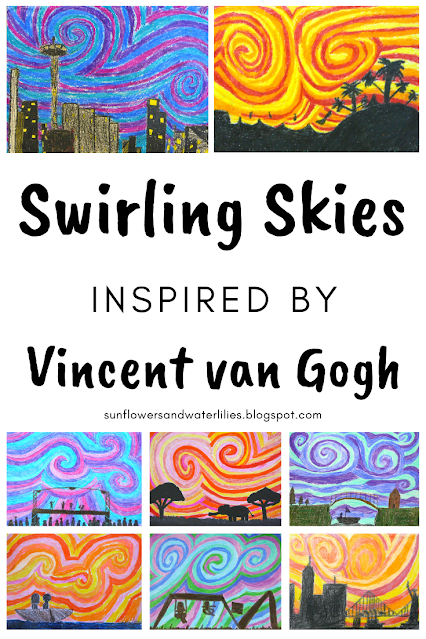Modern Art Self Portraits
After studying different styles from the Modern Art era, 8th grade students each chose one style to inspire their own self-portrait.
The results are a deeper understanding of Modern Art styles, and an exhibit of unique portraits that reflect each student’s personal art preferences.
Step 1: Understanding Modern Art
We start this lesson by reviewing some of the major artists and art styles of the Modern Art era.
The term Modern Art describes art created during the late 1800s and early-mid 1900s that defied convention and tradition and took art to a new level of creative expression. It was a period of experimentation, as artists went beyond the boundaries of realistic art (the camera became commonplace by the end of the 1800s and could now meet that need for realistic representation). Modern art is not to be confused with Contemporary Art, which is art created from the late 20th century up through the present day.
The Modern Art movements that we focus on for this project include Impressionism/Post-Impressionism, Fauvism, Cubism, and Surrealism. We look at Impressionist artists such as Claude Monet, Edgar Degas, Pierre Renoir, and Mary Cassatt. We look at Post-Impressionist artists such as Vincent Van Gogh, Paul Cezanne, and Georges Seurat. We look at Fauves such as Henri Matisse and André Derain. We look at Cubists such as Pablo Picasso and Georges Braque. And we look at Surrealists such as Salvador Dalí, René Magritte, and Frida Kahlo. My students have thoroughly studied each of these artists at some point between Kindergarten and 8th grade from our “Artist of the Month” curriculum, so we can just do a quick review of the artists and art styles, and then students can consider which style will inspire their own self-portraits.
Step 2: Drawing our Portraits
With the exception of Cubism, most of these styles build off a realistically-drawn portrait. We begin by drawing a portrait with accurate facial proportions, using this handout as a guide.
Students working in Surrealism may deter from the realistic at some point by the end of the drawing, in order to give their artwork surreal qualities. Students working in Cubism will divide their composition up into boxes and draw different parts of the portrait in each box.
Step 3: Painting our Portraits
We paint our portraits using watercolors. I place emphasis on mixing unique colors and utilizing shading techniques (students were introduced to these techniques the prior year while creating watercolor still life paintings).
I love how the resulting portraits reflect each student, as they each chose an art style that really resonated with them.
Happy Painting!
PowerPoints about many of the artists studied for this project, plus the facial proportion handout, are available on my TpT store, All About Art!











.png)





Comments
Post a Comment